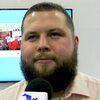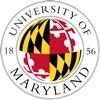Explore all the information on
Enzymes in poultry nutrition
Enzymes are proteins involved in all anabolic and catabolic pathways of digestion and metabolism. Digestive enzymes are categorised as endogenous or exogenous. Endogenous enzymes are produced by the animal and exogenous enzymes are administered from outside. Enzyme supplementation decreases nutrient loss through excreta, reduces diets nutritional levels, improves nutrient availability; thus, enhances production efficiency and profitability. In addition, exogenous enzymes hydrolyse non-starch polysaccharides, increase the usage of feed energy, reduce negative impacts of non-digestive residues on digesta viscosity, and improve gut microbial ecosystem. Cellulase, glucanase, pectinase, xylanase, galactisidases, phytase, non-starch polysaccharides degrading enzymes, amylase, lipase, cellulase, and protease are the most common enzymes used in poultry feed.
I. INTRODUCTION With the recent COVID-19 pandemic disrupting the regular supply chain in agriculture and threatening food security, it is imperative to look for innovative ideas to meet the population's food demand (FAO, 2021). The agriculture sector is pressured to offer sustainable, economical, and ethically-produced animal protein. Egg, a cheap and relatively easy-to-produce commodity, is one of the best candidates for such protein. Thus, there is a surging increase in layer...
Comments : 0
Recommendations: 0
I. Introduction In all vegetable-based diets such as wheat, corn and soybean meal, up to 83% of dietary phosphorus (P) is bound to phytate (Li et al., 2016; Aureli et al., 2017). Phytate is known to contain bound P that is unavailable to the broilers, resulting in the use of inorganic-P sources such as monocalcium phosphate and dicalcium phosphate (NRC, 1994) in order to fulfill the broiler P requirements. However, the use of inorganic-P sources in broilers not only increases the...
Comments : 1
Recommendations: 1
I. Introduction Phytase enzymes are commonly used in the pig and poultry feed industry mainly to increase the availability of phosphorus (P) from plant ingredients. Additionally, phytase improves the availability of other nutrients such as Ca, digestible amino acids (AA), and energy (Dersjant4Li et al. 2015a) by facilitating breakdown of phytate P and thus negating its anti-nutritional effects on nutrient digestibility. Combination of Phytase with NSP enzymes has proven to be an...
Comments : 1
Recommendations: 3
Mr. O.P. Singh, Managing Director of ABTL Enzymes, shares his thoughts on the recent edition of KIPF 2024, addressing the role of ABTL as a pivotal player in the global animal feed industry...
Comments : 0
Recommendations: 3


Enhancing Egg Production: Key Factors Influencing Chicken Health and Yield
Suggested link
Feed accounts for more than 70% of total production cost in Poultry and optimization of performance using least feed cost is one of the pre requisites to ensure profitable Poultry production. With changes in the raw material availability, price, quality and so on, there is a huge demand to finding alternate forms of ingredients which optimise the performance and at the same time do not allow the feed cost go to the higher side. Although alternative ingredients are an economical...
Comments : 1
Recommendations: 2
John Boney (Pennsylvania State University) New generations of feed enzymes are included to enhance nutrient utilization. This study was designed to evaluate the efficacy of a new generation phytase, HiPhorius (HP), and protease, ProAct 360, when fed to peaking hens. Dietary treatments included Positive Control (PC), Negative Control 1 (NC1) at 0.15% nPP, NC1+600 FYT/kg HP, NC1+900 FYT/kg HP, Negative Control 2 (NC2) with a 2% crude protein (CP)...
Comments : 0
Recommendations: 0
Introduction There are four forms of phytic acid (inositol hexakisphosphate, InsP 6 ), which have been identified in nature, myo, neo-, scyllo- and D-chiro-, that differ in their stereochemical conformation (Fig. S1) and association with metal ions as phytates in different soils (Turner et al., 2002). Among these, myo-inositol hexakisphosphate (InsP 6 ) garners the most attention from plant scientists. It is the principal storage form of phosphorus in plants,...
Comments : 1
Recommendations: 1
I. INTRODUCTION As we learn more about the negative impacts of calcium (Ca) on the availability of phosphorus (P) in broiler diets, it highlights how little we know about Ca requirements, digestibility of Ca in ingredients and optimal Ca to P ratios. The interactions through which Ca exerts some of its negative effects can be direct or through chelation’s with phytate and the latter having a profound impact on the efficacy of phytase and on P digestibility....
Comments : 1
Recommendations: 3
John Boney (Pennsylvania State University) comments on improvements in egg production with superdosing of phytase while reducing phosphorus, in this Engormix interview during IPPE 2024 in Atlanta, USA....
Comments : 0
Recommendations: 1
Soybean meal (SBM) and canola meal (CM) are two plant-based protein sources which contain reasonable amounts (2.9 and 6.8 g/kg, respectively) of calcium (Ca). Currently, no published values are available for the Ca digestibility in SBM and limited studies (Anwar et al., 2018; Moss et al., 2018) are available for the Ca digestibility in CM. Microbial phytases are now routinely added in poultry diets to improve the bioavailability of phosphorus (P) bound to phytate (myo-inositol hexaphosphate)...
Comments : 2
Recommendations: 3


Veterinary APIs Market Update: Price Trends & Key Insights – February 2025
Suggested link
I. INTRODUCTION Phytase is commonly used in broiler diets at a typical dose level of 1000 FTU/kg feed to increase the P availability from phytate and reduce the need for inorganic phosphate inclusion. Increasing the phytase dose above this level is expected to further reduce the need to add inorganic phosphate and further reduce P excretion. In addition, if a phytase can break down phytate quickly and completely in the upper gastrointestinal tract, it will mitigate the...
Comments : 0
Recommendations: 0
I. INTRODUCTION Mannan is a plant based-NSP derived from polymerisation of mannose sugars, it is categorised as galactomannan or glucomannan based on the presence of galactose and glucose side chains (Aspinall, 1973). Generally, galactomannan is the dominant form in legumes (Sundu et al., 2012). The ratio between mannose to galactose dictates the water solubility of galactomannan where galactose has a strong capacity to bind water and increase gut viscosity. The β-mannan in...
Comments : 0
Recommendations: 0
I. INTRODUCTION Broiler diets are formulated on the basis of ideal protein ratios (IPR) where selected amino acid requirements are expressed relative to lysine (100). However, IPR have been developed over decades for standard diets rather than diets with reduced-CP. This has led to the possibility that reduced-CP diets require modified IPR. For this reason, two sets of ratios were evaluated in diets with 210 and 180 g/kg CP in a 2 × 2 factorial design. II....
Comments : 3
Recommendations: 3
DL-Methionine (DL-Met, 99%) and liquid DL-2-hydroxy-4-methylthio butanoic acid (methionine hydroxy analogue-free acid, MHA-FA, 88%) are often used in commercial poultry feeds to meet the requirements for Methionine+Cysteine (M+C). However, differences in chemical properties and absorption decrease the relative bioavailability value (RBV) of MHAFA, which corresponds to 65% of DL-Met for performance . This study aimed to confirm that MHA-FA can be replaced with DL-Met at a...
Comments : 6
Recommendations: 9
Toxi-Free Plus® is designed to protect farmers from invisible economic losses because of mycotoxins pollution in feed. Toxi-Free Plus® provides complete protection against Mycotoxins.
...
Comments : 4
Recommendations: 2
The genetic potential of modern broiler strains can only be exploited by focusing on their changed nutritional requirements. Feed is the most important aspect of poultry production which is primarily based on corn and soy, but the cost of feed ingredients for poultry diets continues to rise due to increased demand and decreased availability. This has resulted in rise in conventional feed formulations, making it important to understand the composition of alternative feed ingredients. The cell...
Comments : 1
Recommendations: 4
ABSTRACT Enteric infections such as coccidiosis and necrotic enteritis in broilers may have a large influence on the endogenous amino acids (eAA) losses within the gastrointestinal tract (GIT). Although not much is known on this topic, more information is available on the effects of these diseases on the apparent ileal digestibility (AID) of amino acids. There are many factors that must be considered when attempting to determine the intestinal flow of eAA, including age of the...
Comments : 12
Recommendations: 9
...
Comments : 0
Recommendations: 0
Due to the feed materials and animal digestion system, 20% of the protein in poultry feed can't be digested and used by the birds. This is why protein enzymes are introduced to the feed. Enzymes are biological catalysts that aid in the breakdown of feed nutrients and improve digestion of dietary components. The use of exogenous feed enzymes in poultry diet is becoming a norm to overcome the adverse effects of anti-nutritional factors and improve bird performance. Protease is a...
Comments : 0
Recommendations: 0
INTRODUCTION Practical applications of agricultural wastes in poultry nutrition play an important role in replacing expensive ingredients and/or additives in their diet particularly after COVID-19 outbreaks in which an expected shortage of feed resources for animal nutrition may have occurred (1–3). Poultry are a valuable source of animal protein of high quality, and nutrition of poultry plays an essential role in controlling the balance of pro-oxidants and antioxidants and...
Comments : 0
Recommendations: 0


.jpg&w=3840&q=75)






.jpg&w=3840&q=75)
.jpg&w=3840&q=75)




.jpg&w=3840&q=75)








.jpg&w=3840&q=75)











